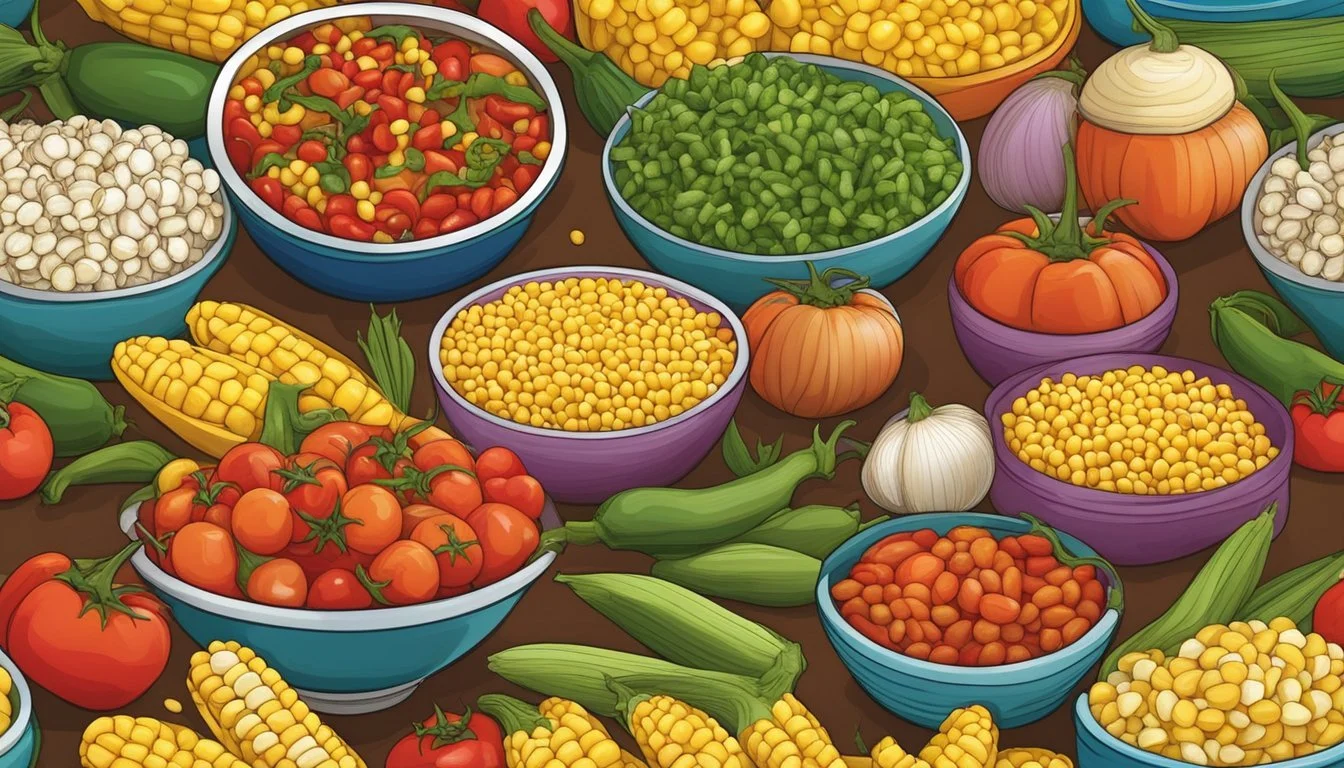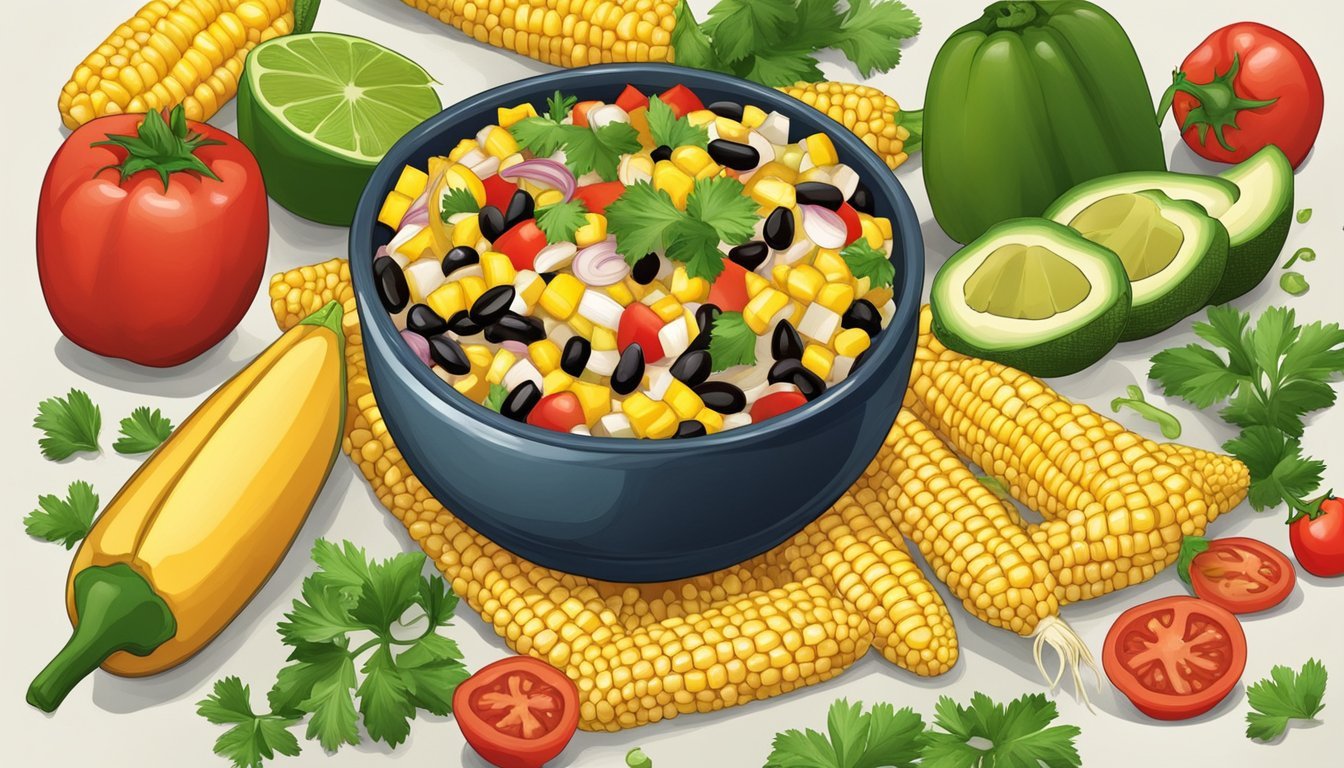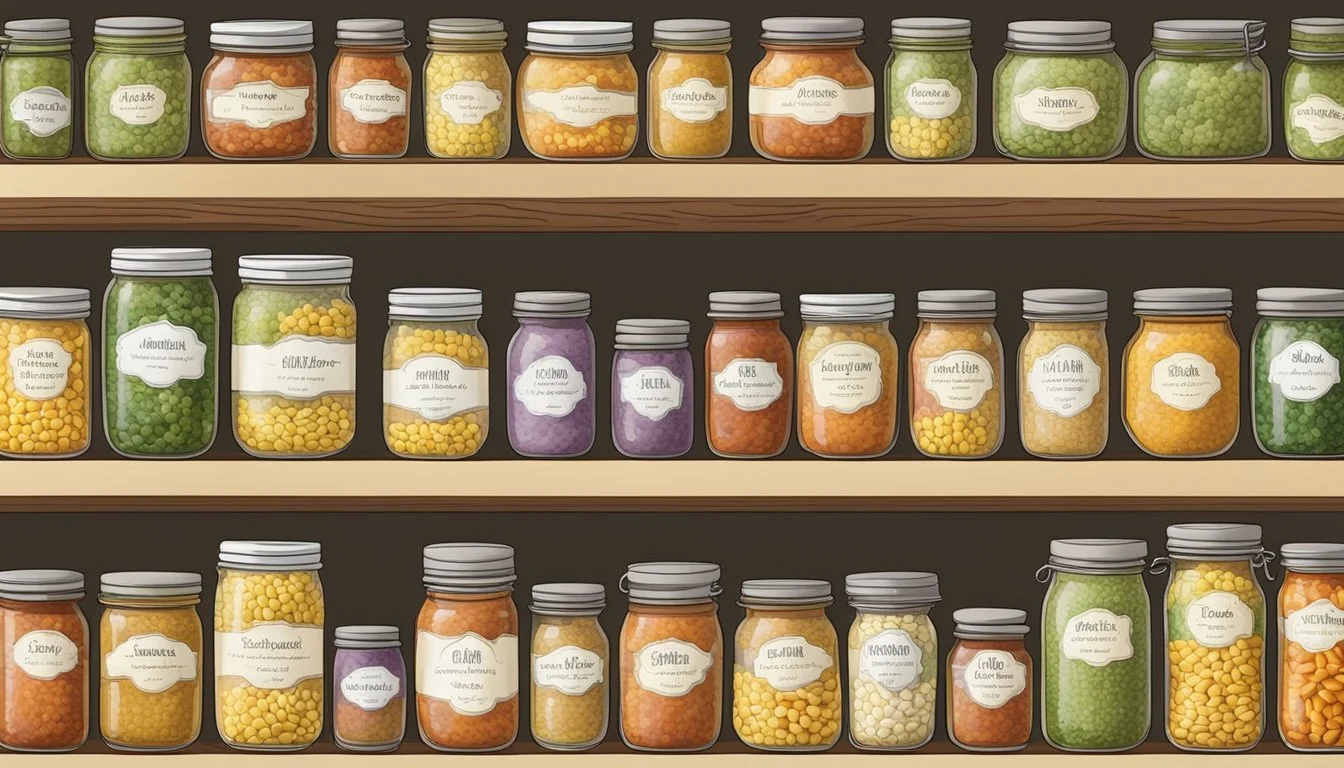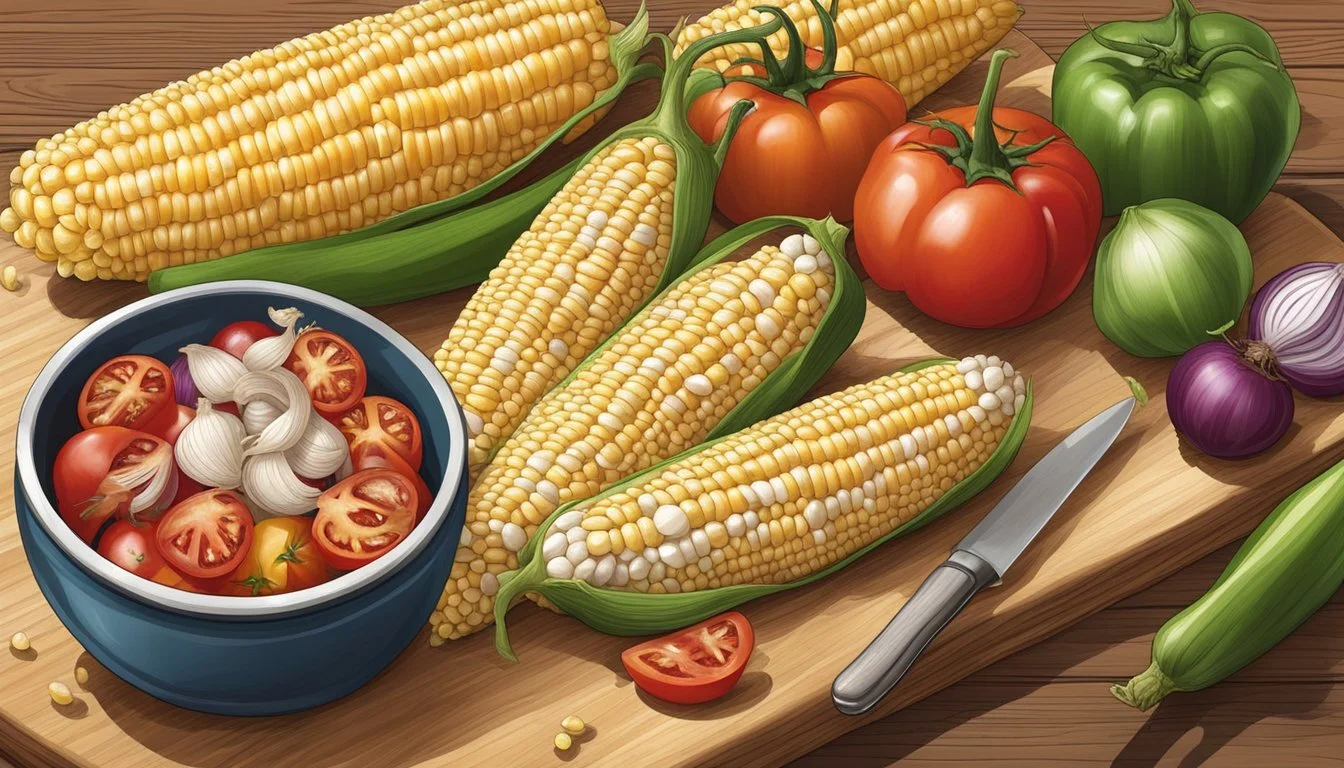Corn Salsa Substitutes
Delicious Alternatives for Any Dish
For those who love the zesty, refreshing flavor of corn salsa but find themselves without it, there are several delicious and easy substitutes available. Pico de Gallo, with its fresh ingredients like tomatoes, onions, and cilantro, makes an excellent alternative, providing a similar texture and burst of flavor. For a fruitier twist, mango salsa can offer a sweet and tangy combination that pairs well with various dishes.
Another great option is black bean and corn salsa, which retains the corn element while adding protein and heartiness from the beans. Pineapple and avocado salsa is also a fantastic choice, offering a unique blend of sweetness and creaminess. These substitutes not only match the versatility of corn salsa but also bring their own unique tastes to the table, perfect for experimenting and enhancing meals.
Understanding Salsa Fundamentals
Salsa is an essential condiment in various dishes, adding vibrant flavors and textures. Key ingredients like tomatoes, cilantro, lime juice, onions, and peppers form its base, contributing to its unique taste.
Defining Salsa and Its Key Ingredients
Salsa is a mix of finely chopped or blended vegetables and spices, commonly used in Mexican cuisine. It can be either raw or cooked, and its consistency ranges from smooth and liquid to chunky.
Core ingredients include tomatoes, cilantro, lime juice, onions, peppers, and garlic.
Tomatoes: Provide a juicy, sweet base.
Lime Juice: Brings acidity.
Onions and Peppers: Enhance flavor and heat.
Garlic: Gives depth.
Each ingredient plays a specific role, making salsa versatile and rich in flavor.
The Role of Salsa in Cuisine
Salsa serves multiple purposes in culinary applications. It enhances and complements the flavors of various dishes.
In Mexican cuisine, it's often served with tacos, nachos, and grilled meats. It acts as both a condiment and a dip, providing brightness and balancing rich or spicy elements.
Homemade salsa can be customized to match personal tastes, with variations like adding fruits or different herbs. This adaptability makes it a cornerstone in many recipes, essential for creating dynamic and flavorful meals.
Popular Salsa Varieties
https://youtu.be/zyIMpFJrRhAExploring different salsa varieties offers a diverse culinary experience, from traditional tomato-based salsas to unique fruit blends and inventive alternatives.
Traditional Tomato Salsa
Traditional tomato salsa is often characterized by its use of tomatoes, onions, and chili peppers. This type of salsa can be enhanced with jalapenos for added heat and lime juice for a tangy kick. Salt and sugar balance the flavors, making this salsa versatile for numerous dishes. Pico de Gallo, a fresh version of tomato salsa, includes diced tomatoes, onions, cilantro, and lime juice, offering a crisp, refreshing taste.
Fruit-Based Salsas
Fruit-based salsas are a flavorful twist on the classic. Mango and pineapple are popular choices, often mixed with peppers and cilantro for a sweet-spicy combination. Another delicious option includes cherries and peaches, paired with jalapenos for a delightful contrast. These salsas add a fruity dimension to grilled meats, seafood, and salads.
Other Salsa Types
Besides traditional and fruit salsas, other types introduce diverse flavors and textures. Salsa verde, made with tomatillos, offers a tangy alternative. Black bean and corn salsa combines hearty ingredients with spices and lime juice. These types of salsas provide excellent salsa substitute options, offering variations on the classic formula for those seeking new tastes.
Substitute Ingredients for Salsa
When searching for substitutes for traditional salsa, consider alternatives for tomatoes, flavor enhancers, and aromatic herbs to achieve a similar taste and texture.
Tomato Substitutes
Several ingredients can replace tomatoes in salsa. Diced tomatoes can be substituted with crushed tomatoes for a smoother texture. Tomato juice can add moisture and a mild flavor. For a richer taste, tomato paste works well. Roasted red peppers offer a sweet and smoky profile, while mangoes or pineapples add a tropical twist that complements various dishes.
Flavor Enhancers and Spices
To replace traditional salsa spices, use cumin and chili powder for a familiar warmth and heat. Coriander and oregano add complexity and depth. Crushed red pepper flakes enhance the heat, while lime juice provides acidity. For a sweeter note, consider adding a pinch of sugar or honey.
Herbs and Aromatics Substitutes
For those looking to substitute traditional herbs, cilantro can be replaced with parsley or mint for a fresh taste. Red onions can be swapped with scallions or chives for a milder flavor. Garlic is essential for depth; if fresh garlic is unavailable, try garlic powder. Basil can also be added for an aromatic twist.
These substitute ingredients offer versatile options for creating delicious salsa alternatives.
Creative Alternatives to Traditional Salsa
When you're looking for something different to top your tacos or dip your chips into, there are several creative alternatives to traditional salsa. From sauces that pack a punch to hearty dips and homemade concoctions, these options will elevate your snacking experience.
Using Sauces as Salsa Substitutes
Hot Sauce: A versatile option, hot sauce can add a spicy kick to any dish. It pairs well with tacos, nachos, or even scrambled eggs. Choose one that matches your heat tolerance, whether it's mild picante sauce or a fiery taco sauce.
Enchilada Sauce: This sauce, typically used for drizzling over enchiladas, can also serve as a flavorful dip. Its rich, spicy profile complements tortilla chips beautifully, offering a departure from traditional salsa.
Marinara Sauce: While unconventional, marinara sauce can be a delightful salsa substitute. Its robust tomato flavor works well with garlic bread or mozzarella sticks. A dash of fresh basil and a sprinkle of parmesan can enhance its appeal.
Dips and Spreads as Alternatives
Guacamole: Made from mashed avocados, diced tomatoes, onions, and cilantro, guacamole brings a creamy texture and refreshing taste. Lime juice and salt round out this dip, making it a popular choice alongside tortilla chips.
Cheese Dip: Perfect for those who love a rich, creamy option. This dip, which can be made with cheddar, Monterey jack, or a mix of cheeses, is best served warm. Keto cheese dip is a low-carb alternative that uses cream cheese and cheddar.
Bean Dip: A hearty and protein-packed option, bean dip can be made from pinto, black, or refried beans. Additions like jalapenos, onions, and spices give it a boost. Mexican sour cream dip, which includes beans and sour cream, offers a tangy twist.
Homemade Salsa Variations
Pico de Gallo: Fresh and simple, Pico de Gallo is made with diced tomatoes, onions, cilantro, and lime juice. It's chunkier than salsa and adds a refreshing crunch to dishes.
Fruit Salsa: For a sweet and spicy mix, try fruit salsa. Mango or pineapple combined with jalapenos, cilantro, and lime juice offers a unique take on salsa. Cherries and peaches can also be used for a sweet twist.
Corn Salsa: Using fresh or canned corn, this salsa adds a touch of sweetness. Mixed with tomatoes, onions, cilantro, and lime juice, it's a delightful and colorful alternative. It's great as a topping for tacos or a dip for chips.
Experimenting with these alternatives can provide new flavors and textures, making your meals more exciting and diverse.
Pairing Salsa Substitutes with Meals
Different salsa substitutes pair well with various meals, enhancing flavors and adding unique twists to traditional dishes. This guide helps you expertly match your corn salsa substitutes with the right snacks, appetizers, main courses, and unique dish combinations.
For Snacks and Appetizers
When choosing salsa substitutes for snacks and appetizers, the goal is to maintain the simplicity and ease of dipping while introducing new flavors.
Guacamole: Pairs perfectly with tortilla chips, offering a creamy contrast to the crunch.
Cheese Dip: Ideal for nachos, combining melted cheese with diced scallions or jalapenos for extra heat.
Pico de Gallo: A fresh combination of tomatoes, onions, and cilantro that complements crackers or pita bread.
Each of these substitutes ensures that the snack retains its appeal while offering a different taste experience.
For Main Courses and Entrees
Main courses like tacos, burgers, and grilled meats benefit from robust, flavorful salsa substitutes.
Diced Tomatoes with Onions, Jalapenos, and Lime: Enhance tacos by adding freshness and a hint of spice.
Black Bean and Corn Salsa: Perfectly complements grilled chicken or fish, adding both protein and texture.
Pineapple and Avocado Salsa: Great with pork dishes, providing a sweet and creamy balance to richer meats.
These substitutes can transform a simple dish into a memorable meal, offering both complexity and balance.
For Unique Dish Combinations
For those looking to experiment with unique dish combinations, less conventional salsa substitutes can offer surprising and delightful results.
Homemade Cheese Dip: Can be used as a pasta sauce, adding a rich and creamy layer to your dish.
Mango Salsa: Works well with baked beans or as a topping for spicy burgers, blending sweetness with heat.
Rotel (Diced Tomatoes with Chili Peppers): Enhances chili or stews, providing a robust, spicy kick.
Each of these pairings allows for creativity in the kitchen, inviting new flavors and textures into familiar dishes.
Nutritional Considerations for Substitutes
When selecting a substitute for corn salsa, it's important to evaluate the nutritional aspects to ensure a balanced and healthy choice. The following subsections will cover key points such as caloric and sugar content, sodium levels, and the presence of vitamins and phytonutrients.
Caloric and Sugar Content
Different substitutes for corn salsa vary significantly in calories and sugars. For instance, guacamole, a popular alternative, contains avocados which are calorie-dense. A typical serving of guacamole (1/2 cup) has around 200 calories, primarily from healthy fats.
A simpler substitute like diced tomatoes provides fewer calories, around 25 per half-cup, and minimal natural sugars. When considering syrups like honey, it is worth noting they contribute considerable calories and sugars (about 64 calories per tablespoon).
Sodium Levels
Sodium content is a critical factor for those monitoring their salt intake. Many processed salsas have high sodium levels to enhance flavor. Guacamole generally has lower sodium content—about 150 mg per serving—if made from fresh ingredients.
Cooking with fresh ingredients like tomatoes, cucumbers, or peppers can significantly reduce sodium levels. Using low-sodium alternatives or homemade versions ensures better control over the salt added.
Vitamins and Phytonutrients
Substitutes like guacamole are rich in vitamins and phytonutrients. Avocados are loaded with vitamins C, E, K, and B-6, along with fiber and potassium. These nutrients support overall health, including heart and immune system functions.
Diced tomatoes and peppers are excellent sources of vitamin C and contain beneficial antioxidants. The phytonutrients in these vegetables help combat inflammation and potentially reduce the risk of chronic diseases. Fresh herbs like cilantro, often used in salsa alternatives, add further nutritional value, providing essential oils and antioxidants.
Dietary Preferences and Salsa Substitutes
Choosing a suitable salsa substitute often depends on dietary preferences and restrictions. Here are key alternatives keeping in mind vegetarian, vegan, gluten-free, paleo, and low-carb approaches.
Vegetarian and Vegan Options
For vegetarians and vegans, plant-based ingredients are crucial. Guacamole, made from avocados, tomatoes, and onions, is an excellent option. Another choice is Pico de Gallo with diced tomatoes, onions, jalapenos, and cilantro. Additionally, mango or pineapple salsas provide a fruity, refreshing alternative, incorporating ingredients like mango, pineapple, lime juice, and chili peppers. These substitutes are not only plant-based but also packed with vitamins and antioxidants, making them health-conscious choices.
Gluten-Free and Paleo Friendly
Many salsa substitutes naturally align with gluten-free and paleo dietary restrictions. Black Bean and Corn Salsa is one such substitute, focusing on whole foods like black beans, corn, and bell peppers. Chopped vegetables such as tomatoes, cucumbers, and bell peppers mixed with a fresh lime dressing also work well. For those following a paleo diet, ensuring no added sugars or legumes is essential. A salsa made from diced tomatoes, avocados, onions, and cilantro, without beans, fits perfectly here.
Low-Carb and Keto Approaches
Low-carb and keto diets focus on limiting carbohydrate intake. Avocado-based options, such as guacamole, are ideal due to their low carb content and healthy fats. Keto cheese dip can also act as a great low-carb substitute, made from melted cheese, heavy cream, and diced jalapenos. Fresh vegetable mixes, excluding high-carb options like corn and beans, can provide a refreshing and crunchy alternative. Combining diced bell peppers, cucumbers, onions, and avocado with lime juice and salt can create a perfect low-carb salsa-like dish.
Common Questions Addressed
When looking for substitutes for corn salsa, understanding the nuances of different options can help in making informed choices. This section addresses common questions about potential alternatives.
Can I Use Pasta Sauce Instead of Salsa?
Pasta sauce is often asked about as a substitute for salsa. While it can be used, the differences in flavor and texture may not make it a perfect replacement. Pasta sauce typically has a smoother consistency and incorporates herbs like basil and oregano that are not common in salsa.
Additionally, pasta sauce lacks the spicy kick found in most salsas. If using pasta sauce, it's crucial to adjust the spices by adding ingredients like cumin or chili peppers to mimic a salsa-like taste. Consistency might also need adjusting by incorporating fresh diced tomatoes or onions.
Is Taco Sauce the Same as Salsa?
Many wonder if taco sauce and salsa are interchangeable. Taco sauce is usually smoother and thinner compared to the chunkiness of salsa. They share some ingredients, such as tomatoes and chili peppers, but taco sauce often contains added vinegar and sugar which can alter the flavor profile significantly.
Taco sauce is better for coating and mixing due to its consistency. While it can serve as a substitute in some cuisines, it might not offer the same texture and freshness that traditional salsa provides. It's ideal for dishes where a smoother sauce is preferred, but for dipping, salsa is generally better.
How to Pick the Right Substitute
Choosing the right substitute for corn salsa depends on the desired outcome and specific dish. For a fresh and chunky texture, Pico de Gallo is an excellent choice as it includes similar ingredients like tomatoes, onions, and cilantro. For a fruitier twist, mango or pineapple salsas offer a sweet and spicy combination.
Guacamole serves well in scenarios where creaminess is preferred, enhancing richness in tacos or burritos. Black bean and corn salsa provides a hearty and protein-rich option, suitable for salads and as a dip. When selecting a substitute, consider the flavor, consistency, and how it complements the main dish.
Storage and Shelf Life of Salsa Substitutes
Proper storage is crucial to maintain the quality and extend the shelf life of salsa substitutes, be they homemade or store-bought. Understanding the nuances of keeping each type fresh will help avoid spoilage and maximize their use.
Preserving Homemade Substitutes
Homemade salsa substitutes often lack preservatives, making their shelf life shorter than store-bought options. These substitutes should be stored in airtight containers to prevent contamination. Keeping them in the refrigerator can extend their freshness to about 2-3 days.
Using proper cleanliness during preparation also contributes to a longer shelf life. Ensure all vegetables, herbs, and utensils are sanitized. Adding acidic components like lime juice can help in preservation.
Store-Bought Salsa Substitute Storage
Store-bought salsa substitutes typically have preservatives that extend their shelf life. Unopened jars can last for several months when stored in a cool, dark place. Once opened, they should be refrigerated and consumed within 1-2 weeks.
To prevent spoilage, always use a clean spoon to scoop out the salsa. Keep the jar lid tightly sealed to minimize air exposure. Regularly check the expiration date and observe any changes in odor or texture before use.
Tips for Making Your Own Salsa Substitute
Creating a homemade salsa substitute allows you to customize the flavor profile and texture to suit your taste. By carefully selecting and combining ingredients, adjusting texture, and balancing the heat and sweetness, you can craft a delicious and versatile salsa alternative.
Combining Ingredients for Best Flavor
To achieve a well-rounded taste, use a variety of fresh ingredients.
Consider adding diced tomatoes, onions, and cilantro as the base.
Mixing in fruits like peaches or cherries can provide a sweet note, whereas vegetables like bell peppers or jalapeños add freshness.
Vinegars such as balsamic or apple cider can bring a tangy edge to your salsa.
Spices and herbs, including ground cumin or fresh basil, enhance the overall flavor.
It’s crucial to balance acidity with a touch of sweetness; a drizzle of honey can help.
Texture and Consistency Adjustments
The texture of your salsa substitute is as important as its flavor.
For a chunky salsa, dice all ingredients roughly and mix them by hand.
If a smoother consistency is desired, blend ingredients in a food processor or blender, but pulse to retain some texture.
Avocado or sour cream can make the salsa creamier.
To thicken, consider adding finely chopped vegetables or seeds like chia.
Conversely, if it's too thick, dilute with a bit of vinegar or lime juice.
Adding Heat or Sweetness
The heat level can transform your salsa substitute dramatically.
Incorporate jalapeños, green chiles, or a splash of chipotle hot sauce for a smoky, spicy kick.
Adjust the heat by removing or including the seeds of these peppers.
For extra sweetness, include diced fruits such as mango or pineapple.
Adding a tablespoon of honey or agave syrup can also enhance the sweetness without overpowering the other flavors.
When crafting your salsa substitute, taste and adjust frequently to find the perfect balance.








